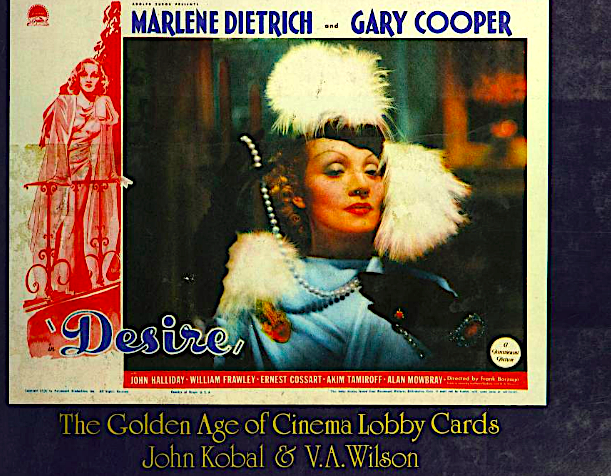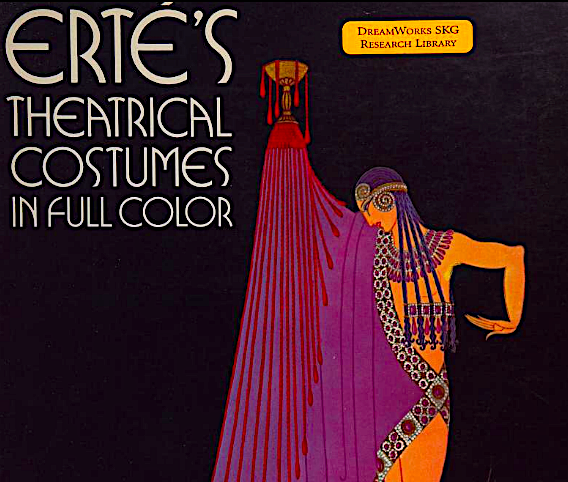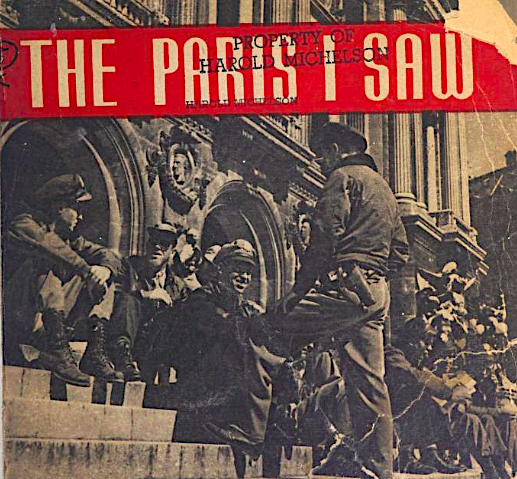[Most Recent Entries] [Calendar View]
Monday, February 1st, 2021
| Time | Event |
| 12:00p | When the Frequency for Tuning Instruments Became a Grand Conspiracy Theory Conspiracy theories are like blockbuster Hollywood movies. Instead of the painful, confusing tedium of historical detail that meets us when we try to understand the world, they offer spectacle, clear dichotomies of good and evil, the promise of redemptive resolution. If only, say, we could rid ourselves of scurrilous figures behind the scenes, we could get back to the garden and make everything great. Or, if only we could change the frequency of standard musical pitch from 440 Hz to 432 Hz, we could throw off the yoke of Nazi mind control, experience pure meditative bliss, open our root chakras, and…. Wait… what? If this one’s new to you, you’ll find rabbit holes aplenty to fall into online. Retired dentist Leonard Horowitz, for example, has elaborated a theory that has “the Rockefeller Foundation’s military commercialization of music,” then Nazi propaganda minister Joseph Goebbels, tricking the world into 440 Hz, “effectively persuading Hitler’s supposed enemies in Britain to adopt this allegedly superior standard tuning for the ‘Master Race.’” Meanwhile, on YouTube (and even in scientific journals), notes Thom Dunn at Boing Boing, pseudoscience about the “‘meditative qualities of 432 Hertz” proliferates, “which, of course, relates back to Horowitz’s theory that 440 Hertz is a weapon of Nazi aggression.” Like most conspiracy theories, “there is a kernel of truth here—that there has been an historical debate between these frequencies for middle ‘A,’ and that 440 Hertz won out largely because of Western industrialization, which coincided with some World Wars.” The history, however, predates the Rockefeller Foundation and the Nazis, extending back at least to 1885, as Alan Cross writes at Global News, when “the Music Commission of the Italian Government declared that all instruments and orchestras should use a tuning fork that vibrated at 440 Hz, which was different from the original standard of 435 Hz and the competing 432 Hz used in France.” The push for worldwide commercial standardization finally decided the question in the 20th century, not mind control. It was just business, but why do the proponents of 432 Hz believe this is the superior frequency? In the video above, guitar teacher Paul Davids satirizes the reasoning (over the X-Files theme): something to do with “the natural harmonics found in sacred numbers” and the “psychic poisoning of the mass of humanity.” Davids quickly moves on to discuss the actual history of tuning, from the 15th century onward, when standards ranged from country to country, even city to city, anywhere between 400 and 500 Hz. (Learn more about the history of pitch in the video above.) Some classical musicians who play Bach, for example, tune to 415 Hz, not because it has magical qualities but because it’s the frequency Bach used, one semitone below today’s standard 440 Hz. But all of this is academic. Should not our ears and chakras be the judge? I stick closely to the criterion, “if it sounds good, it is good,” so I’m open to considering the superiority of 432 Hz. So is Davids, and he demonstrates the difference between the two pitches in some fingerpicked examples of classical and contemporary hits. What do we hear? Each of us will have a different response to these frequencies, depending on several factors, not least of which is our degree of conditioning to 440 Hz. Musicians and composers, for example, are far more sensitive to changes in pitch and more likely to feel the difference, especially if they try to sing or play along. What does Davids hear? He personally dismisses any notion that 432 Hz tuning will “let a different part of the universe vibrate,” or whatever. For one thing, playing in a different key makes the frequency change largely irrelevant. For another, every musical note resonates at multiple frequencies, never only one. Logically, the difference between 432 and 440 Hz is arbitrary, even in the most meditative of relaxing 432 Hz videos on YouTube. “It all comes down,” says Davids, “to what you’re playing and how it sounds.” Or as Thelonious Monk put it in his indispensable advice to musicians, “You’ve got to dig it to dig it, you dig?” and “A note can be small as a pin or as big as the world, it depends on your imagination.” For more, read Ted Gioia’s 2017 piece in The Daily Beast, Are We All Mistuning Our Instruments, and Can We Blame the Nazis?. via Boing Boing Related Content: The History of Music Told in Seven Rapidly Illustrated Minutes Visit an Online Collection of 61,761 Musical Instruments from Across the World Josh Jones is a writer and musician based in Durham, NC. Follow him at @jdmagness When the Frequency for Tuning Instruments Became a Grand Conspiracy Theory is a post from: Open Culture. Follow us on Facebook, Twitter, and Google Plus, or get our Daily Email. And don't miss our big collections of Free Online Courses, Free Online Movies, Free eBooks, Free Audio Books, Free Foreign Language Lessons, and MOOCs. |
| 3:00p | The Internet Archive Now Digitizing 1,000,000+ Objects from a Massive Cinema History Library
As yet, this pattern hasn’t appeared in the Michelson Cinema Research Library, now hosted online at the Internet Archive. But it may yet, as the project of digitization and uploading has hardly begun: it was just last year that the nonagenarian Lillian Michelson donated to the Archive her formidable collection of research materials, amassed over her long career. Related Content: Download 6600 Free Films from The Prelinger Archives and Use Them However You Like Good Movies as Old Books: 100 Films Reimagined as Vintage Book Covers 1,150 Free Movies Online: Great Classics, Indies, Noir, Westerns, etc. Based in Seoul, Colin Marshall writes and broadcasts on cities, language, and culture. His projects include the Substack newsletter Books on Cities, the book The Stateless City: a Walk through 21st-Century Los Angeles and the video series The City in Cinema. Follow him on Twitter at @colinmarshall or on Facebook. The Internet Archive Now Digitizing 1,000,000+ Objects from a Massive Cinema History Library is a post from: Open Culture. Follow us on Facebook, Twitter, and Google Plus, or get our Daily Email. And don't miss our big collections of Free Online Courses, Free Online Movies, Free eBooks, Free Audio Books, Free Foreign Language Lessons, and MOOCs. |
| 8:00p | Werner Herzog Discovers the Ecstasy of Skateboarding: “That’s Kind of My People” If Werner Herzog has ever stood atop a skateboard, cinema seems not to have recorded it. But when asked by online skateboarding magazine Jenkem to discuss the sport and/or lifestyle, he did so with characteristically little reservation. “I’m not familiar with the scene of skateboarding,” he admits in the video interview above. “At the same time, I had the feeling, yes, that’s kind of my people.” Fans will make the connection between skateboarding videos and the Bavarian filmmaker’s early documentary The Great Ecstasy of Woodcarver Steiner, on champion ski jumper Walter Steiner, even before a clip of it appears. In fact Herzog himself, as revealed in the autobiographical short Portrait Werner Herzog, only turned filmmaker after shelving his own dreams of ski-jumping. The experience must have taught him viscerally, through those parts of the body that don’t forget, what it means to make countless attempts resulting in countless failures — with a better failure here and there, and at some distant, ecstatic moment, perhaps a success. Viewed at great enough length, the kind of skateboarder who attempts a trick on video dozens, even hundreds of times, before landing it could well be a character from one of Herzog’s own films, especially his documentaries about men unable to stop putting themselves in harm’s way in the name of their fixations. “So many failures,” marvels Herzog as he watches one such video. “That’s astonishing.” It certainly “doesn’t do good to his pelvis, nor to his elbows,” Herzog adds, but such is the price of ecstasy. For him, the obscurity of the vast majority of skateboarders only compounds the sacredness of their practice. This as opposed to the David Blaines of the world, whose physical feats “are meant only for his own publicity, and for shining out in the media. Skateboard kids are not out for the media. They do it for the joy of it, and for the fun of it.” If Herzog were to pay cinematic tribute to these kids, surely he would make similar observations though voiceover narration. As for his instinct of how to fill out the rest of the soundtrack, “What comes to mind first and foremost would be Russian Orthodox church choirs.” Related Content: Werner Herzog Offers 24 Pieces of Filmmaking and Life Advice Portrait Werner Herzog: The Director’s Autobiographical Short Film from 1986 Based in Seoul, Colin Marshall writes and broadcasts on cities, language, and culture. His projects include the Substack newsletter Books on Cities, the book The Stateless City: a Walk through 21st-Century Los Angeles and the video series The City in Cinema. Follow him on Twitter at @colinmarshall or on Facebook. Werner Herzog Discovers the Ecstasy of Skateboarding: “That’s Kind of My People” is a post from: Open Culture. Follow us on Facebook, Twitter, and Google Plus, or get our Daily Email. And don't miss our big collections of Free Online Courses, Free Online Movies, Free eBooks, Free Audio Books, Free Foreign Language Lessons, and MOOCs. |
| << Previous Day |
2021/02/01 [Calendar] |
Next Day >> |






